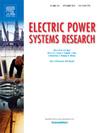A distributed dispatch approach for district-level electric-heat-gas integrated energy systems considering carbon emission and green certificate trading
IF 3.3
3区 工程技术
Q2 ENGINEERING, ELECTRICAL & ELECTRONIC
引用次数: 0
Abstract
With a particular focus on enhancing energy consumption efficiency and addressing the challenge of low-carbon energy supply, this paper proposes a distributed dispatch approach for a district-level electric-heat-gas integrated energy system, incorporating an integrated mechanism for trading carbon credits and green certificates. A hierarchical dispatch framework is constructed, dividing the system into distribution networks and multi-energy microgrids, which addresses the limitations of existing centralized approaches by ensuring privacy and autonomy for different operators. On the distribution network side, a stepped carbon emission trading is considered, prioritizing both economic feasibility and carbon neutrality. On the side of multi-energy micro-networks, both carbon and green certificate trading are considered. Each micro-network adjusts its own dispatch approach to achieve maximum benefits. Then, through carbon quotas and renewable energy quotas, the low-carbon objective is converted into the system cost, which becomes part of the total cost. Finally, the interaction power at the interface connecting the upper and lower tiers serves as the coupling variable, which is decoupled and solved by the analysis target cascade. The dispatch approach is verified through simulations on an integrated heating and cooling network based on the IEEE 33-node distribution grid and 20-bus natural gas grid, demonstrating its effectiveness in achieving both economic and low-carbon objectives.
求助全文
约1分钟内获得全文
求助全文
来源期刊

Electric Power Systems Research
工程技术-工程:电子与电气
CiteScore
7.50
自引率
17.90%
发文量
963
审稿时长
3.8 months
期刊介绍:
Electric Power Systems Research is an international medium for the publication of original papers concerned with the generation, transmission, distribution and utilization of electrical energy. The journal aims at presenting important results of work in this field, whether in the form of applied research, development of new procedures or components, orginal application of existing knowledge or new designapproaches. The scope of Electric Power Systems Research is broad, encompassing all aspects of electric power systems. The following list of topics is not intended to be exhaustive, but rather to indicate topics that fall within the journal purview.
• Generation techniques ranging from advances in conventional electromechanical methods, through nuclear power generation, to renewable energy generation.
• Transmission, spanning the broad area from UHV (ac and dc) to network operation and protection, line routing and design.
• Substation work: equipment design, protection and control systems.
• Distribution techniques, equipment development, and smart grids.
• The utilization area from energy efficiency to distributed load levelling techniques.
• Systems studies including control techniques, planning, optimization methods, stability, security assessment and insulation coordination.
 求助内容:
求助内容: 应助结果提醒方式:
应助结果提醒方式:


